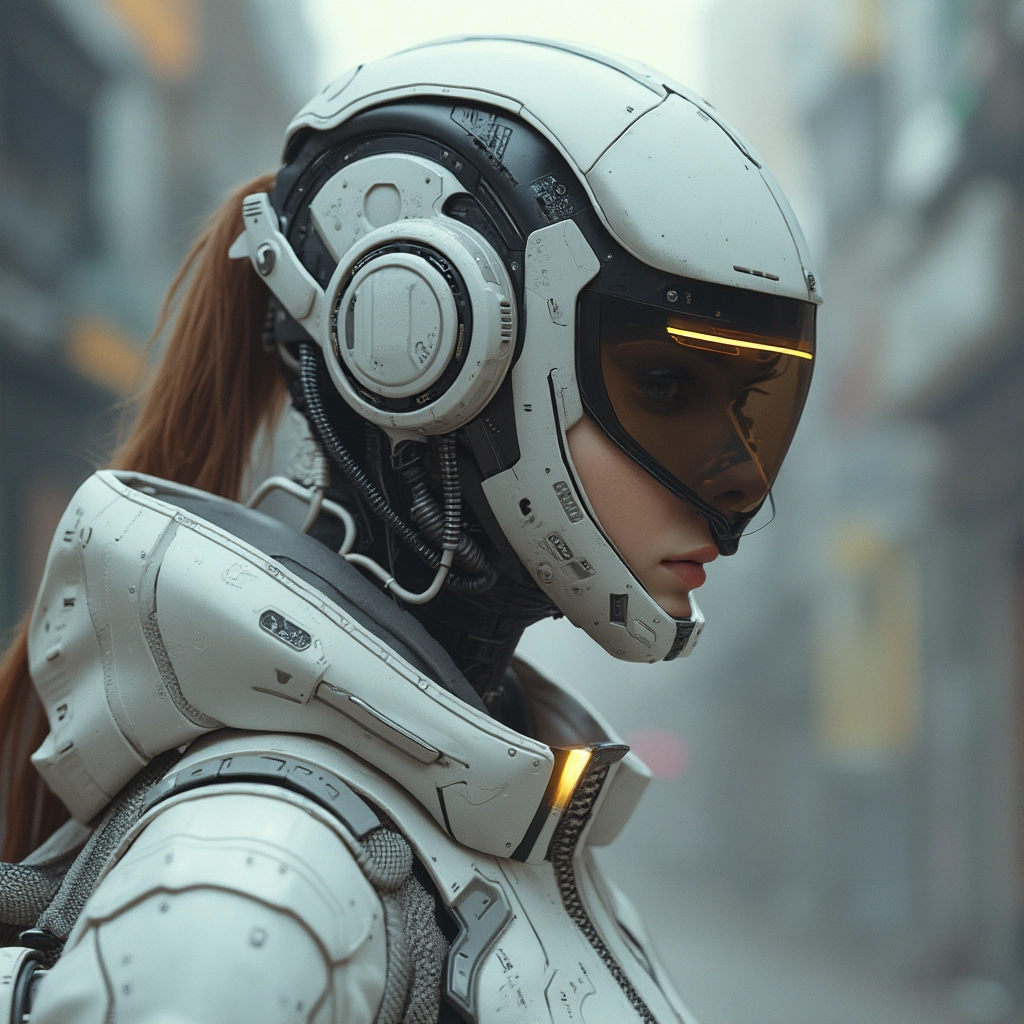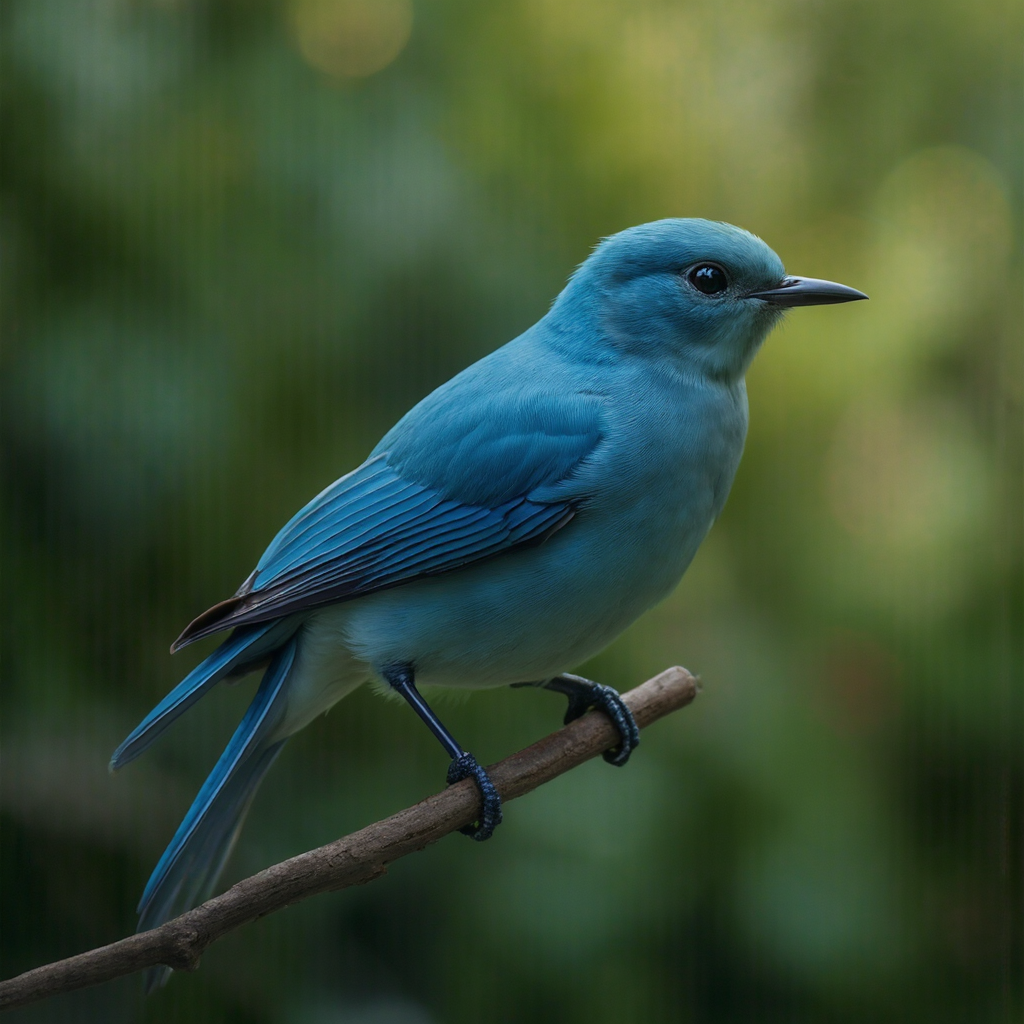flux-dev-controlnet
Maintainer: xlabs-ai

42

| Property | Value |
|---|---|
| Run this model | Run on Replicate |
| API spec | View on Replicate |
| Github link | View on Github |
| Paper link | No paper link provided |
Create account to get full access
Model overview
flux-dev-controlnet is an AI model developed by XLabs-AI that uses ComfyUI to generate images with the FLUX.1-dev model and XLabs' controlnet models. This model provides canny, depth, and soft edge controlnets that can be used to guide the image generation process. It builds upon similar models like flux-controlnet-canny-v3, flux-controlnet-canny, and flux-controlnet-depth-v3 that offer specific controlnet capabilities for the FLUX.1-dev model.
Model inputs and outputs
The flux-dev-controlnet model takes a variety of inputs to control the image generation process, including a prompt, a control image, and various parameters to adjust the controlnet strength, guidance scale, and output quality. The model outputs one or more generated images in the specified format (e.g., WEBP).
Inputs
- Seed: Set a seed for reproducibility.
- Steps: The number of steps to use during image generation, up to 50.
- Prompt: The text prompt to guide the image generation.
- Lora URL: An optional LoRA model to use, specified as a URL.
- Control Type: The type of controlnet to use, such as canny, depth, or soft edge.
- Control Image: The image to use as the controlnet input.
- Lora Strength: The strength of the LoRA model to apply.
- Output Format: The format of the output images, such as WEBP.
- Guidance Scale: The guidance scale to use during image generation.
- Output Quality: The quality of the output images, from 0 to 100.
- Negative Prompt: Things to avoid in the generated image.
- Control Strength: The strength of the controlnet, which varies depending on the type.
- Depth Preprocessor: The preprocessor to use with the depth controlnet.
- Soft Edge Preprocessor: The preprocessor to use with the soft edge controlnet.
- Image to Image Strength: The strength of the image-to-image control.
- Return Preprocessed Image: Whether to return the preprocessed control image.
Outputs
- One or more generated images in the specified output format.
Capabilities
The flux-dev-controlnet model is capable of generating high-quality, realistic images by leveraging the FLUX.1-dev model and various controlnet techniques. The canny, depth, and soft edge controlnets can be used to guide the generation process and produce images with specific visual characteristics, such as defined edges, depth information, or soft transitions.
What can I use it for?
You can use the flux-dev-controlnet model to create a wide range of images, from photorealistic scenes to stylized and abstract compositions. The controlnet capabilities make it well-suited for tasks like product visualization, architectural design, and character creation. The model could be useful for individuals and companies working on visual content creation, design, and digital art.
Things to try
To get the most out of the flux-dev-controlnet model, you can experiment with different control types, preprocessors, and parameter settings. Try using the canny controlnet to generate images with clear edges, the depth controlnet to create scenes with a strong sense of depth, or the soft edge controlnet to produce images with softer, more organic transitions. Additionally, you can explore the use of LoRA models to fine-tune the generation process for specific styles or subjects.
This summary was produced with help from an AI and may contain inaccuracies - check out the links to read the original source documents!
Related Models

flux-controlnet

6
The flux-controlnet model, developed by the XLabs-AI team, is a ControlNet model fine-tuned on the FLUX.1-dev model by Black Forest Labs. It includes a Canny edge detection ControlNet checkpoint that can be used to generate images based on provided control images and text prompts. This model builds upon similar flux-dev-controlnet, flux-controlnet-canny, and flux-controlnet-canny-v3 models released by XLabs-AI. Model inputs and outputs The flux-controlnet model takes in a text prompt, a control image, and optional parameters like CFG scale and seed. It outputs a generated image based on the provided inputs. Inputs Prompt**: A text description of the desired image Image**: A control image, such as a Canny edge map, that guides the generation process CFG Scale**: The Classifier-Free Guidance Scale, which controls the influence of the text prompt Seed**: The random seed, which controls the stochastic elements of the generation process Outputs Image**: A generated image that matches the provided prompt and control image Capabilities The flux-controlnet model can generate a wide variety of images based on the provided prompt and control image. For example, it can create detailed, cinematic scenes of characters and environments using the Canny edge control image. The model is particularly skilled at generating realistic, high-quality images with a strong sense of artistic style. What can I use it for? The flux-controlnet model can be used for a variety of creative and artistic projects, such as concept art, illustrations, and even film/game asset creation. By leveraging the power of ControlNet, users can guide the generation process and create images that closely match their creative vision. Additionally, the model's capabilities could be useful for tasks like image inpainting, where the control image is used to guide the generation of missing or damaged parts of an existing image. Things to try One interesting thing to try with the flux-controlnet model is exploring the interplay between the text prompt and the control image. By varying the control image, users can see how it influences the final generated image, even with the same prompt. Experimenting with different control image types, such as depth maps or normal maps, could also yield unique and unexpected results. Additionally, users can try adjusting the CFG scale and seed to see how these parameters affect the generation process and the final output.
Updated Invalid Date

flux-dev-realism

234
The flux-dev-realism model is a variant of the FLUX.1-dev model, a powerful 12 billion parameter rectified flow transformer capable of generating high-quality images from text descriptions. This model has been further enhanced by XLabs-AI with their realism LORA, a technique for fine-tuning the model to produce more photorealistic outputs. Compared to the original FLUX.1-dev model, the flux-dev-realism model can generate images with a greater sense of realism and detail. Model inputs and outputs The flux-dev-realism model accepts a variety of inputs to control the generation process, including a text prompt, a seed value for reproducibility, the number of outputs to generate, the aspect ratio, the strength of the realism LORA, and the output format and quality. The model then generates one or more high-quality images that match the provided prompt. Inputs Prompt**: A text description of the desired output image Seed**: A value to set the random seed for reproducible results Num Outputs**: The number of images to generate (up to 4) Aspect Ratio**: The desired aspect ratio for the output images Lora Strength**: The strength of the realism LORA (0 to 2, with 0 disabling it) Output Format**: The format of the output images (e.g., WEBP) Output Quality**: The quality of the output images (0 to 100, with 100 being the highest) Outputs Image(s)**: One or more high-quality images matching the provided prompt Capabilities The flux-dev-realism model can generate a wide variety of photorealistic images, from portraits to landscapes to fantastical scenes. The realism LORA applied to the model helps to produce outputs with a greater sense of depth, texture, and overall visual fidelity compared to the original FLUX.1-dev model. The model can handle a broad range of prompts and styles, making it a versatile tool for creative applications. What can I use it for? The flux-dev-realism model is well-suited for a variety of creative and commercial applications, such as: Generating concept art or illustrations for games, films, or other media Producing stock photography or product images for commercial use Exploring ideas and inspirations for creative projects Visualizing scenarios or ideas for storytelling or world-building By leveraging the realism LORA, the flux-dev-realism model can help to bring your creative visions to life with a heightened sense of visual quality and authenticity. Things to try One interesting aspect of the flux-dev-realism model is its ability to seamlessly blend different artistic styles and genres within a single output. For example, you could try prompting the model to generate a "handsome girl in a suit covered with bold tattoos and holding a pistol, in the style of Animatrix and fantasy art with a cinematic, natural photo look." The results could be a striking, visually compelling image that combines elements of realism, animation, and speculative fiction. Another approach to explore would be to experiment with the LORA strength parameter, adjusting it to find the right balance between realism and stylization for your specific needs. By fine-tuning this setting, you can achieve a range of visual outcomes, from highly photorealistic to more fantastical or stylized.
Updated Invalid Date
👁️
flux-controlnet-canny-v3

82
The flux-controlnet-canny-v3 model is a Canny ControlNet checkpoint developed by XLabs-AI for the FLUX.1-dev model by Black Forest Labs. This model is part of a broader collection of ControlNet checkpoints released by XLabs-AI for the FLUX.1-dev model, which also includes Depth (Midas) and HED ControlNet versions. The flux-controlnet-canny-v3 model is a more advanced and realistic version of the Canny ControlNet compared to previous releases, and can be used directly in ComfyUI. Model inputs and outputs The flux-controlnet-canny-v3 model takes two main inputs: Inputs Prompt**: A text description of the desired image Control image**: A Canny edge map that provides additional guidance to the model during image generation Outputs Generated image**: The model outputs a 1024x1024 resolution image based on the provided prompt and Canny control image. Capabilities The flux-controlnet-canny-v3 model can generate high-quality images by leveraging the Canny edge map as an additional input. This allows the model to produce more defined and realistic-looking images compared to generation without the control input. The model has been trained on a wide range of subjects and styles, from portraits to landscapes and fantasy scenes. What can I use it for? The flux-controlnet-canny-v3 model can be a powerful tool for artists, designers, and content creators looking to generate unique and compelling images. By providing a Canny edge map as a control input, you can guide the model to produce images that closely match your creative vision. This could be useful for concept art, book covers, product renderings, and many other applications where high-quality, customized imagery is needed. Things to try One interesting thing to try with the flux-controlnet-canny-v3 model is to experiment with different levels of control image influence. By adjusting the controlnet_conditioning_scale parameter, you can find the sweet spot between the control image and the text prompt, allowing you to achieve the desired balance between realism and creative expression. Additionally, you can try using the model in conjunction with other ControlNet versions, such as Depth or HED, to see how the different control inputs interact and influence the final output.
Updated Invalid Date

sdxl-controlnet

1.7K
The sdxl-controlnet model is a powerful AI tool developed by lucataco that combines the capabilities of SDXL, a text-to-image generative model, with the ControlNet framework. This allows for fine-tuned control over the generated images, enabling users to create highly detailed and realistic scenes. The model is particularly adept at generating aerial views of futuristic research complexes in bright, foggy jungle environments with hard lighting. Model inputs and outputs The sdxl-controlnet model takes several inputs, including an input image, a text prompt, a negative prompt, the number of inference steps, and a condition scale for the ControlNet conditioning. The output is a new image that reflects the input prompt and image. Inputs Image**: The input image, which can be used for img2img or inpainting modes. Prompt**: The text prompt describing the desired image, such as "aerial view, a futuristic research complex in a bright foggy jungle, hard lighting". Negative Prompt**: Text to avoid in the generated image, such as "low quality, bad quality, sketches". Num Inference Steps**: The number of denoising steps to perform, up to 500. Condition Scale**: The ControlNet conditioning scale for generalization, between 0 and 1. Outputs Output Image**: The generated image that reflects the input prompt and image. Capabilities The sdxl-controlnet model is capable of generating highly detailed and realistic images based on text prompts, with the added benefit of ControlNet conditioning for fine-tuned control over the output. This makes it a powerful tool for tasks such as architectural visualization, landscape design, and even science fiction concept art. What can I use it for? The sdxl-controlnet model can be used for a variety of creative and professional applications. For example, architects and designers could use it to visualize their concepts for futuristic research complexes or other built environments. Artists and illustrators could leverage it to create stunning science fiction landscapes and scenes. Marketers and advertisers could also use the model to generate eye-catching visuals for their campaigns. Things to try One interesting thing to try with the sdxl-controlnet model is to experiment with the condition scale parameter. By adjusting this value, you can control the degree of influence the input image has on the final output, allowing you to strike a balance between the prompt-based generation and the input image. This can lead to some fascinating and unexpected results, especially when working with more abstract or conceptual input images.
Updated Invalid Date